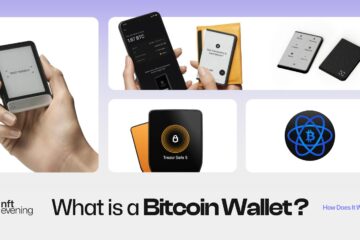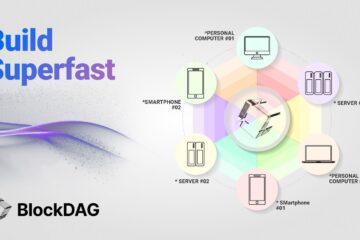Coin vs token often appears in crypto discussions, yet many newcomers struggle to see why the distinction matters. Both refer to digital assets, but they operate in different ways and fulfill distinct roles in the blockchain ecosystem. Coins typically function as native currencies on their own blockchain, while tokens rely on existing platforms to expand use cases like governance, gaming, or finance.
Understanding whether an asset is a coin or a token helps you gauge its potential value, flexibility, and risk profile. In this article, we’ll clarify what each term means, break down the key advantages and types, and compare them in a head-to-head look at their structural and functional contrasts. Knowing the difference between coins and tokens can guide you when evaluating market opportunities or deciding which assets fit your needs, whether you’re looking to pay transaction fees, fuel decentralized applications, or represent a piece of real-world value.
What is a Coin?
A coin in the crypto world is typically a digital currency with its own dedicated blockchain. Bitcoin is the most notable example, operating on the Bitcoin blockchain with a well-defined process for creating and validating new blocks. Other well-known coins include Ethereum, Litecoin, and Bitcoin Cash. These, and other digital assets often serve as the primary medium of exchange or store of value within their respective ecosystems and can also be used to pay transaction fees, just like physical coins.
Benefits of Coin
Native Blockchain Control
When a coin runs on its own network, developers and the community have more freedom to guide updates, manage transaction speeds, and shape governance rules.
Security
Coins often draw large mining or staking communities, helping to secure the entire system against attacks or manipulation.
Established Brand
Leading coins like Bitcoin have a track record, recognized by traders and institutions worldwide. This brand recognition can create more trust and liquidity.
Types of coins
Payment Coins
Bitcoin and Litecoin function primarily as mediums of exchange and digital money, facilitating everyday transactions or cross-border transfers.
Privacy Coins
Assets such as Monero or Zcash are crypto coins that incorporate special privacy features that mask transaction details, appealing to individuals who prioritize anonymity.
Stablecoins
Pegged to external references, such as a fiat currency like the U.S. dollar, stablecoins reduce volatility. Examples include USDC or DAI, vital for traders seeking quick, stable conversions in crypto markets.
Popular Coins
- Bitcoin (BTC): The Bitcoin blockchain is the original cryptocurrency, known for its decentralized nature and limited supply.
- Ethereum (ETH): Although Ethereum is evolving into a platform for tokens and smart contracts, ETH remains its core coin, paying for gas fees.
- Bitcoin Cash (BCH): A result of a Bitcoin fork aimed at larger block sizes and faster transactions. It shares Bitcoin’s ethos but pursues greater scalability.
- Litecoin (LTC): Created as a faster, lighter version of Bitcoin, often seen as a testbed for new virtual currency features.
- Other Popular Coins: Additional networks like Ripple’s XRP or Tron’s TRX are also considered cryptocurrency coins, each intending to tackle unique challenges in global payments or application development.
What Is a Token?
A token is a digital asset created on an existing blockchain network rather than requiring its own dedicated network. Unlike a coin, which typically operates as the primary currency of a chain, a token can represent nearly anything: from utility or governance rights to physical assets or even digital art. Tokens rely on the underlying blockchain’s security and consensus mechanisms, meaning they inherit certain benefits (like network stability or speed) but must adhere to the host blockchain platform protocol’s technical parameters. This model allows for quick deployment of new projects, lower development overhead, and more versatility in how assets and services are offered.
Benefits of tokens
Fast Deployment
Creating crypto tokens is more straightforward than building an entire blockchain from scratch. Developers can use established platforms (like Ethereum) to launch tokens within hours.
Wider Adoption
Tokens tap into robust, existing communities and developer ecosystems. They can immediately benefit from wallets, decentralized exchanges, and other infrastructure already designed for that blockchain.
Flexible Use Cases
Tokens can embody anything from share-like security tokens to specialized utility tokens for dApps. The diverse range of functionalities fuels constant innovation.
Shared Security
Since cryptocurrency tokens rely on a proven network’s consensus, they don’t need separate miners or validators, which can reduce overall security risks and overhead.
Types of tokens
Utility Tokens
Provide access or features within a particular ecosystem. For instance, a gaming dApp might issue a token that lets players buy virtual items.
Security Tokens
These token transactions digitally represent ownership in real-world financial instruments such as stocks or bonds, subjecting them to stricter regulatory frameworks.
Governance Tokens
Tokens issued for governance grant holders the right to vote on protocol changes, funding proposals, or developmental priorities. They shape decentralized projects without a central authority.
Non-Fungible Tokens (NFTs)
Unique tokens that represent singular assets like digital art, collectibles, or in-game items. Each NFT has distinct metadata making it non-interchangeable.
Popular Tokens
- Chainlink (LINK): A leading oracle token bridging off-chain data (like price feeds) with on-chain smart contracts, vital for DeFi protocols seeking reliable information.
- Uniswap (UNI): Issued by the popular decentralized exchange, UNI grants governance power over protocol fee structures and upgrades. UNI holders can also propose new features or community grants.
- ApeCoin (APE): A governance and utility token tied to the broader Bored Ape Yacht Club ecosystem, used for voting, exclusive events, and certain digital marketplaces.
- SushiSwap (SUSHI): A DeFi token awarding holders a share of swap fees on the SushiSwap DEX, balancing utility with partial governance rights over treasury decisions.
Coins vs Tokens: The Main Differences
| Coin | Token | |
| Structure | Resides on its own blockchain, handling transactions natively, like Bitcoin or Litecoin. | Relies on an existing blockchain (like Ethereum), inheriting that network’s security or weaknesses. |
| Purpose | Often serves as a medium of exchange or store of value, fueling the blockchain’s operations. | Typically grants specialized functions (such as governance or utility) within a dApp or ecosystem. |
| Decentralization | Maintained through miners or stakers on its proprietary network, distributing control. | Dependent on the host chain’s consensus and security; decentralization varies by project. |
| Interoperability | Usually confined to bridging/wrapping to operate on other chains, or using external solutions. | Tightly integrated with the underlying platform, adopting standard protocols, like with ERC-20. |
| Use Case | Supports fundamental blockchain tasks—payment currency, transaction fees, and network rewards. | Offers utility, such as access to features, staking rewards, governance rights, or asset representation. |
Structure
Coins have their own native blockchain and run independently, and process transactions through their underlying consensus mechanism. In contrast, tokens rely on an existing chain, such as the Ethereum network, for their ledger and security.
This means coins often require more extensive development and upkeep—like maintaining miners or validators—while tokens use established infrastructure to launch faster with lower costs.
Because tokens share a host chain’s storage and validation, they do not need an exclusive node network. Instead, they inherit the resilience of whichever protocol underlies them.
Purpose
Coins typically serve as a primary medium of exchange, paying transaction fees or rewarding block validators. Their main function might be digital currency (like Bitcoin) or fueling the blockchain’s operations (like Ether on Ethereum).
Tokens, however, take on multiple roles: some represent governance privileges, others reflect staking or yield in DeFi, and still others operate as stable units tied to external assets. While coin usage often focuses on payments or collateral, buying tokens can unlock specialized features—like getting special or limited in-game items or managing voting rights.
Decentralization
A coin’s decentralization level depends on its network’s size, the distribution of validators or miners, and whether a small group controls development. Bitcoin’s widely dispersed mining activities exemplify strong decentralization, while certain smaller coin projects are more centralized in practice.
Tokens exist on top of these blockchains, so their decentralization depends partly on the host chain and partly on how the token’s smart contract is governed. If a single project team manages most of the token supply or upgrading rights, then it may lead to reduced decentralization for that token’s ecosystem.
Interoperability
Coins often stay confined to their own chain unless wrapped or bridged to other networks.
For instance, “wrapped Bitcoin” (WBTC) uses Ethereum-based tokens to represent BTC in DeFi. Tokens, by design, frequently plug into the host chain’s broader ecosystem. If a token is ERC-20 on Ethereum, it can interact with any dApp, wallet, or layer-2 solution that supports that standard.
This flexibility fosters synergy across DeFi platforms, DEXs, and NFT marketplaces. Still, cross-chain interoperability can grow complicated if tokens span multiple networks.
Use case
Coins provide simple payment methods, store-of-value functions, or blockchain fuel (like gas on Ethereum). Their limited supply or core usage can drive market demand, especially as network activity intensifies.
Tokens serve distinct roles within an app’s or protocol’s micro-economy, governance tokens can dictate upgrades, while utility tokens let holders stake, access premium features, or earn fees.
Each approach suits different ends: coins often emphasize global transactions or robust store-of-value narratives, whereas tokens cover niche expansions like gaming, social media, or specialized DeFi frameworks on top of an existing blockchain.
Conclusion
Having a solid, working knowledge of the differences between a coin on its own blockchain and a token built on an existing network is critical for any crypto enthusiast. Coins frequently serve as digital currencies or gas for their blockchain’s operations, while tokens often power specialized utilities, governance, or application-specific features.
Before making investment decisions, ensure you’ve considered each asset’s underlying network security, practicality, and user adoption. By understanding this distinction in the coin vs. token conversation, you’ll navigate the dynamic crypto landscape more confidently and spot the opportunities that best fit your long-term investment goals.
 Bitcoin
Bitcoin  Ethereum
Ethereum  Tether
Tether  XRP
XRP  USDC
USDC  TRON
TRON  Lido Staked Ether
Lido Staked Ether  Dogecoin
Dogecoin  Figure Heloc
Figure Heloc  Cardano
Cardano  WhiteBIT Coin
WhiteBIT Coin  Bitcoin Cash
Bitcoin Cash  Wrapped stETH
Wrapped stETH  Wrapped Bitcoin
Wrapped Bitcoin  USDS
USDS  Wrapped eETH
Wrapped eETH  Binance Bridged USDT (BNB Smart Chain)
Binance Bridged USDT (BNB Smart Chain)  Chainlink
Chainlink  Monero
Monero  LEO Token
LEO Token  WETH
WETH  Zcash
Zcash  Stellar
Stellar  Hyperliquid
Hyperliquid  Coinbase Wrapped BTC
Coinbase Wrapped BTC  Ethena USDe
Ethena USDe  Litecoin
Litecoin  Sui
Sui  Avalanche
Avalanche  Hedera
Hedera  sUSDS
sUSDS  Shiba Inu
Shiba Inu  USDT0
USDT0  Dai
Dai  Uniswap
Uniswap  PayPal USD
PayPal USD  Mantle
Mantle  Cronos
Cronos  Canton
Canton  World Liberty Financial
World Liberty Financial  Toncoin
Toncoin  Ethena Staked USDe
Ethena Staked USDe  Polkadot
Polkadot  Aave
Aave  USD1
USD1  Rain
Rain  Bitget Token
Bitget Token  MemeCore
MemeCore 


